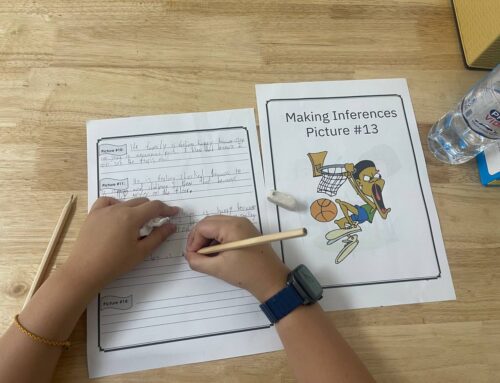Childhood Apraxia of Speech (CAS) is a motor-planning speech disorder: the brain struggles to send precise movement plans to the lips, tongue, jaw, and palate. In Phnom Penh, CAS can be mistaken for a simple “speech delay,” but the profile is different and requires specialized therapy. If you’re seeing the signs below, OrbRom Center’s Speech Therapy and Assessments teams can help your child build clear, confident speech.
How to spot CAS (beyond a typical delay)
-
Inconsistent errors: the same word sounds different each time.
-
Difficulty sequencing sounds/syllables: “banana” might become “na-ba-na” or be avoided entirely.
-
Disrupted prosody: unusual stress or rhythm—words may sound “choppy.”
-
Groping mouth movements: visible effort to find the right placement.
-
Worse with longer words/phrases: short words are easier; multisyllables break down.
If you need a quick refresher on language vs. speech, start here: Communication & Language and a broad overview of Speech Sound Disorders.
Assessment in Phnom Penh: what to expect
A CAS evaluation at OrbRom Center focuses on how your child produces sounds, not just whether they are correct. Our SLPs use:
-
Dynamic assessment: we test stimulability and improvement when we add cues (visual, tactile, verbal).
-
Motor-speech tasks: repeating syllables of increasing length and complexity (e.g., CV → CVC → multisyllabic).
-
Consistency checks: the same word across multiple trials.
-
Prosody measures: stress and rhythm at word and sentence level.
-
Oral-mechanism exam: structure/strength, coordination, and diadochokinetic rates.
For more on the evaluation pathway and parent role, see What Is Speech Therapy? and why timing matters: Importance of Early Intervention.
What effective CAS treatment looks like (evidence-aligned)
CAS therapy is motor-based and intensive. Key elements at OrbRom Center (Phnom Penh) include:
-
High-repetition practice of carefully chosen targets.
-
Principles of motor learning: start with blocked practice and heavy cueing, fade to variable practice as accuracy stabilizes.
-
Multisensory cueing: visual gestures, placement cues, and tactile prompts to shape correct movement sequences.
-
Syllable-shape progression: build from simple to complex (CV → CVC → multisyllables → phrases).
-
Prosody training: explicit practice with stress, intonation, and rate.
-
Home carryover: brief, daily routines parents can run with clear success criteria.
-
AAC as support when needed: low-tech boards or speech-generating apps so children can communicate now while speech motor skills improve.
Explore practical home ideas here: Speech Therapy Techniques and Exercises and a broader look at early supports: Early Intervention – Why It Matters.
Getting started at OrbRom Center (Phnom Penh)
If you suspect CAS, don’t wait for your child to “outgrow it.” Book a developmental speech assessment to confirm the profile and start a tailored plan at our Olympia City or Borey Peng Hout campuses: Assessments and Speech Therapy. With consistent, targeted practice, children with CAS can make meaningful, measurable gains in clarity and confidence.
Additional reading for parents: Communication & Language and the broader category of Speech Sound Disorders.
We are the only Preschool specialized on children with special needs in PhnomPenh.
- Internationally qualified teachers
- Cambodia’s largest sensory room
- Outdoor swimming pool
- Covered outdoor playground
📞 Phone: 077.455.993
Telegram Link: https://t.me/OrbRom






Leave A Comment